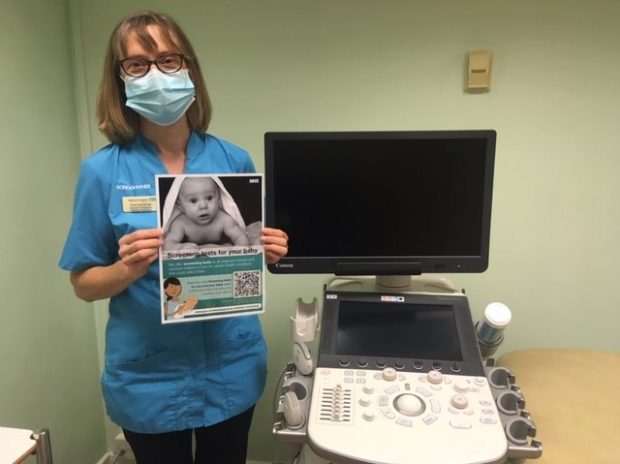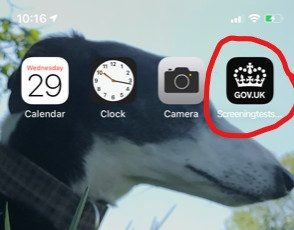
Way back at the end of 2019 and the start of 2020, when no-one had any inkling that the world was about to turn upside down, we blogged about the early adopter sites who kindly (and bravely!) volunteered to pilot giving out digital information about antenatal and newborn screening rather than physical (paper) leaflets.
We thought you'd like to find out how some of them are getting on after the early adopter period finished, so here are some of their stories.
Interestingly, many of them were delighted to have made the transition before COVID hit, as this means they were able to adapt more quickly to virtual booking appointments where there wasn't the option of giving out a physical leaflet.
Bedford
Helen Leonard, antenatal and newborn screening co-ordinator at Bedford Hospital (part of Bedfordshire Hospitals NHS Foundation Trust), says how pleased she is that they've launched the digital information. They've added the weblink to:
- their maternity webpage
- their Facebook page
- screening appointment letters
They've also displayed posters in GP surgeries, children's centres, the maternity unit and special care baby unit. And they've got laminated information for discussing with women.
Luton and Dunstable
Sughra Mustafa is antenatal and newborn screening manager in Luton and Dunstable (also part of Bedfordshire Hospitals NHS Foundation Trust). She stresses the importance of preparing the community midwives for the change to digital information. A few of the midwives were unsure at first but once they got used to the digital information they had no problems.
They particularly liked the short antenatal and newborn animation for women, as well as the fact that the leaflet translations are now much more accessible and easy to use. To start with Sughra found that they were using more leaflets than expected but this was just because midwives were using up existing stock. Since then, they've given out very few leaflets indeed.
Sughra ended by saying:
Our conclusion is that it was an easy process to roll out and has been of benefit to service users. We are yet to do an audit but we feel that women do seem to be better informed.
East and North Hertfordshire
Victoria Barton is the antenatal and newborn screening co-ordinator and a fetal medicine midwife at East and North Hertfordshire NHS Trust. She says that:
The transition to digital STFYAYB was initially a daunting one as many of us were faced with using new technology that we had not had to encounter before. However once we got our heads around this, it was very midwife and service user friendly.
And also:
Overall, I really liked the way PHE team involved and included us in the decision making; they were also very supportive with questions and guidance.
Victoria loved the way that women can save a link to the digital leaflet on their phones (so it looks like an app). This is reassuring for midwives as they know that women will have the information whenever they need it — with no 'scrabbling around' to find it and realising they've left it in their notes back at the hospital!

Victoria stresses that they continue to have a small stock of paper leaflets on hand for those women who need them but says that over the course of this year they've given out very few.
National rollout
We hope that these experiences are reassuring for other screening services that are planning to transition to digital information in the near future.
As a reminder, we hope that all antenatal and newborn screening services will be giving out predominantly digital information to pregnant women by March 2021 at the latest. This is because from 1 April 2021, you will only be able to order a maximum of 10% of your previous volumes of the physical Screening tests for you and your baby leaflet.
There's still lots of time to prepare, and PHE has loads of guidance and resources to help, including the printed posters mentioned above. For now, please contact the screening helpdesk for our digital information transition resource pack. But we'll shortly be publishing this on GOV.UK, so look out for a blog about that soon.
Liane Powell and I are also very happy to have calls with anyone who'd like a little extra help, so please get in touch through the helpdesk if you'd like to organise that.
PHE Screening blog
The PHE Screening blog provides up to date news from all NHS screening programmes. You can register to receive updates direct to your inbox, so there’s no need to keep checking for new blogs. If you have any questions about this blog article, or about population screening in England, please contact the PHE screening helpdesk.